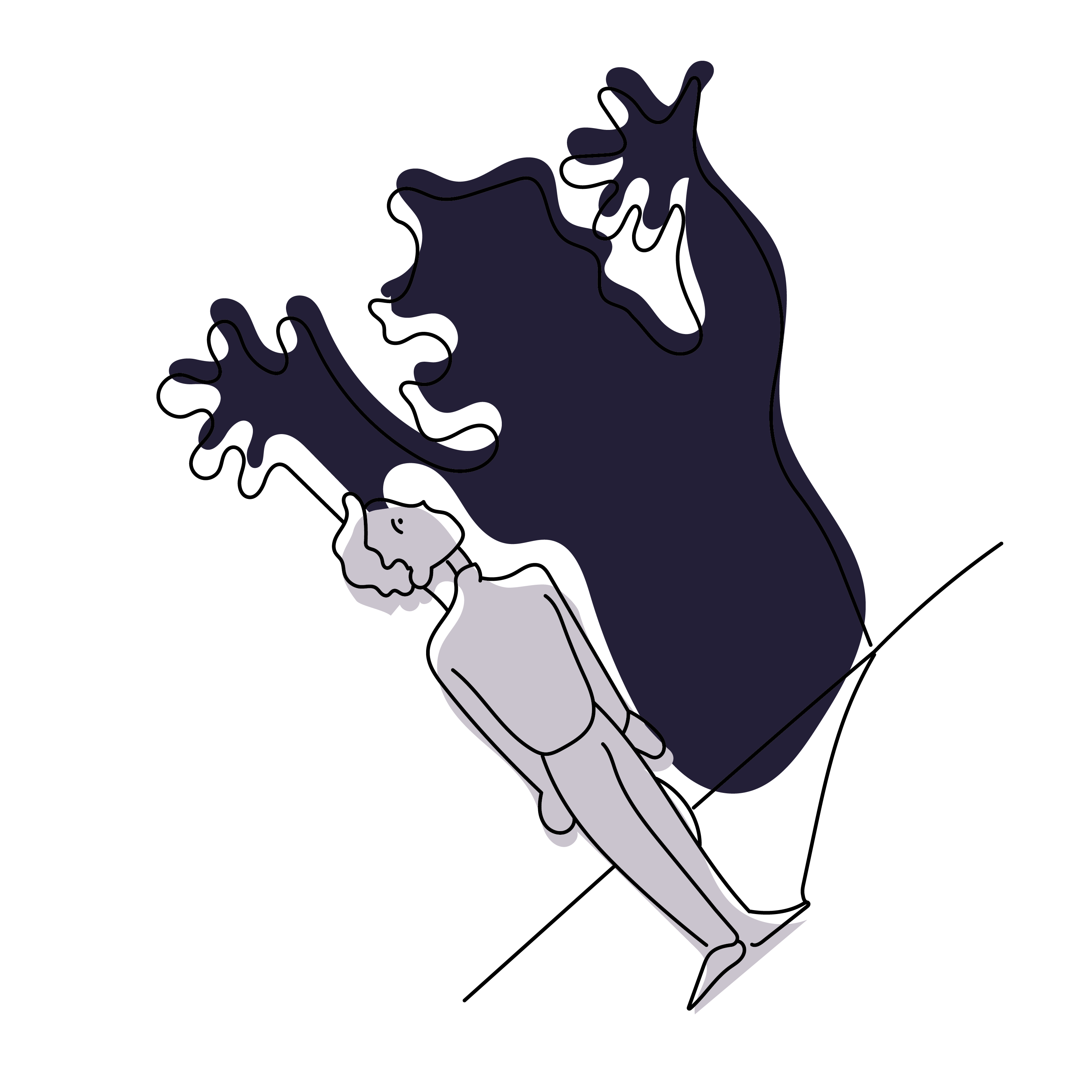
Behavioral patterns. One of those buzzwords you currently see presented over and over again in magazines, Instagram or elsewhere on the web. But while this step into the mainstream annoys me quite a lot in some respects (everything is toxic all of a sudden, everyone is highly sensitive – yet in many cases these are really serious issues, and those actually affected easily lose credibility among the mass of self-diagnosed cases), in the case of behavioral patterns I am happy about this new awareness – because, unlike high sensitivity, they really do affect us all without exception.
I am rather less happy about the generic promises that assure you to get rid of such negative patterns “in no time” with “these 3 simple steps”. Short disclaimer: It doesn’t work. Because behavorial patterns are something complex, highly individual and often unconsciously trained – and perfected – over many years or even decades.
What does that mean exactly?
In the science surrounding the human psyche, the theories and assumptions are as varied as people themselves. In short, a behavioral pattern is when a certain event or situation reflexively triggers an action or feeling. The word reflexive is important here, because it describes one of the most important characteristics of those patterns: they are usually reeled off subconsciously. Meaning: often we don’t even know we have them.
Behavioral patterns are coping strategies that we have adopted to master our everyday life and various situations without having to start from scratch every time. Humans are evolutionary creatures of habit, because simply put, our brain is an efficiency machine that wants to save energy at every possible turn. It does this through, you guessed it, habits and trained processes.
Such automated processes can be really helpful: When driving, for example, when you feel like you’re doing 100 things at once without thinking about it. Or when doing a tennis serve, which one has practiced to the point of no return and has perfected every movement. However, this is not what is meant in the context of negative behavior patterns. Rather, it’s the initially innocent discussions with your S.O. that end in total disaster every time. The damned “never being able to say no” that has haunted us for years. Or that exactly one week before the end of the month, money always runs out. Every. Single. Time.
Most of the time, we have been carrying these behavioral patterns around with us for so long that we perceive them as a given reality.
But it’s not my fault!
Yes and no. The origin of a behavioral pattern is quite complex and often difficult to understand. Not uncommonly, the course is set in childhood. It can be dynamics that we have learned within the family – or experiences that we have had at a young age that significantly shape us and our behavior. In fact, we usually cannot do anything about this early habituation to behavior. But: In the end, it is only you who lives out this behavior – and so you, like every adult, also bear the responsibility for it yourself.
Let’s take a discussion for example. You often hear: “Of course, he made a mountain out of a molehill”. It’s true that it always takes two to tango, but if the same problems arise again and again over the years with different partners, can you really claim that it has nothing to do with you?
And that brings us to the pattern – which usually has a deeper origin. Always going on the defensive in a conflict, or even offensively instigating it again and again could be a subconscious mechanism to avoid actual intimacy. One unknowingly sabotages intact relationships in order to prove to oneself and the other person that they don’t work no matter what you do. In that case, we subconsciously create constant unrest, simply because we don’t trust peace. Because it’s easier to say, “I knew this couldn’t work!” – than to brave a possible disappointment.
If the same problems arise again and again over the years with different partners, can you really claim that it has nothing to do with you?
The tricky thing is that we very rarely discover this for ourselves. Most of the time, we have been carrying these behavioral patterns around with us for so long that we perceive them as a given reality. We only feel the strain of suffering, are unhappy with the situation and misinterpret this as confirmation of our own motives.
What helps in this case are specific questions to oneself. Consciously observe yourself, scrutinize your thoughts, words and actions. Reflect on the past weeks, months and years and ask yourself: Is there a connection? In which moments did I not feel good – and what happened before that? Was I confronted with a certain person or a certain situation?
Often, with the help of these questions, you can already recognize a pattern, in the truest sense of the word. And that, in turn, is the first step in the right direction to sustainably change it. If you want to know how to do that, check out our upcoming post!
And that certainly can’t hurt anyone. Because it’s certain that each one of us is affected or even blocked by one or another negative behavioral pattern. Because we all follow habits – and they, like everything in life, often have two sides.